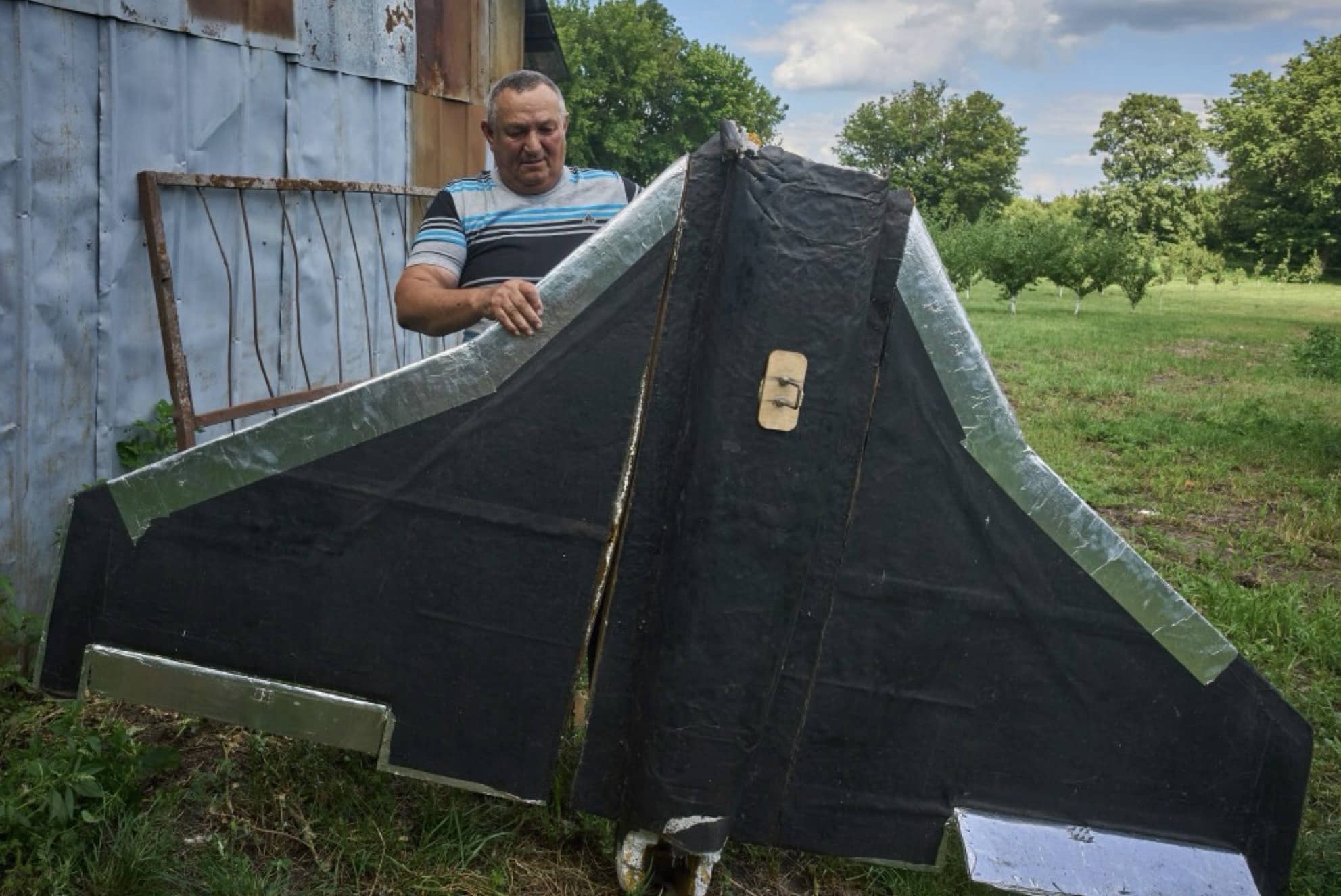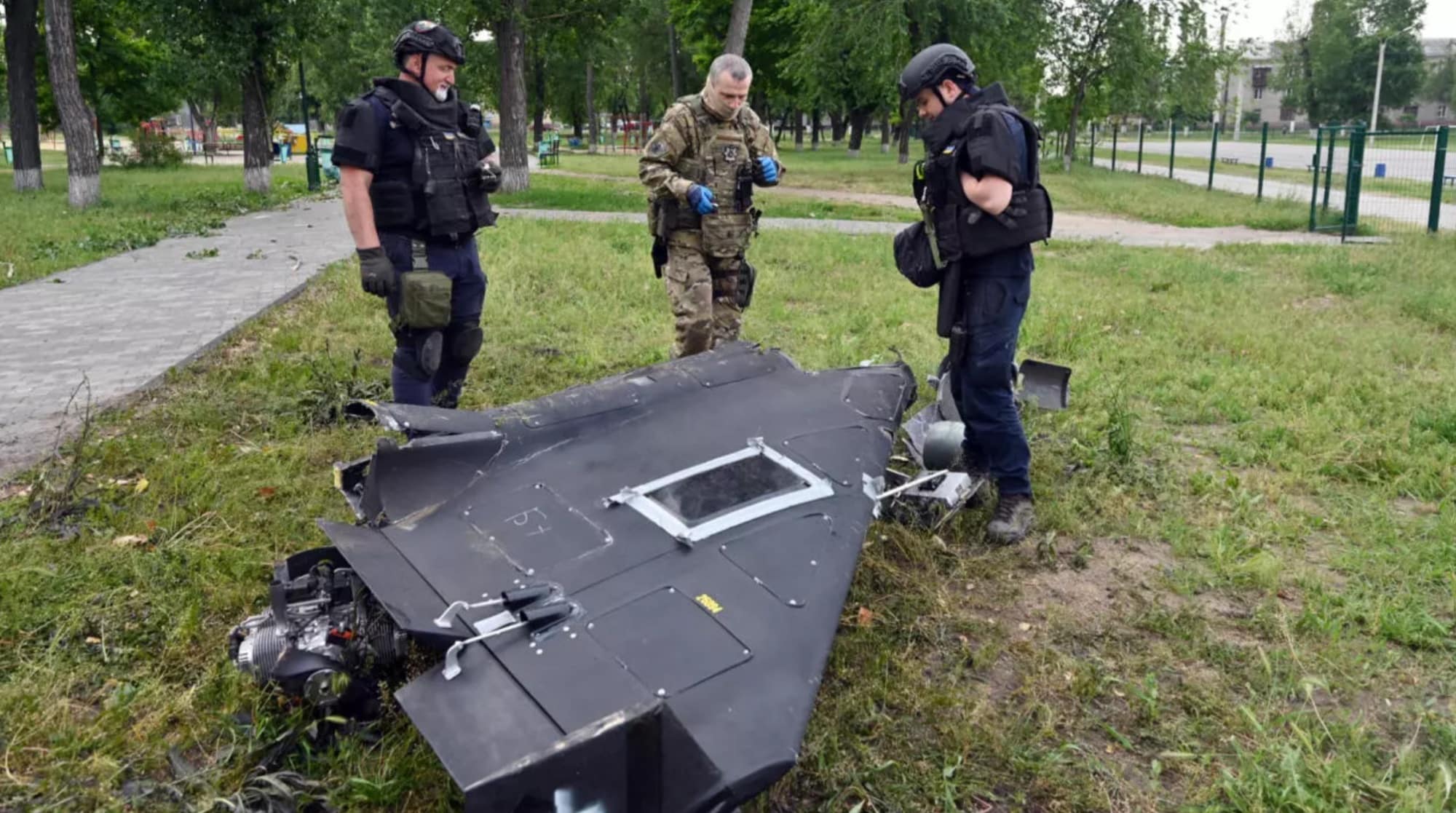Crisis in the Skies: Indian-Made Parts Found in Russian Shahed Drones Targeting Civilians

Ukrainian officials just dropped a bombshell, claiming Indian parts are lurking in the Shahed drones terrorizing their skies – and it’s got global repercussions.
Ukraine’s presidential chief of staff Andriy Yermak has accused Russia of incorporating Indian-made components into Iranian-designed Shahed drones, which Moscow reportedly deploys in strikes against Ukrainian frontlines and civilians. This revelation highlights vulnerabilities in global supply chains for drone technology, raising questions about international efforts to restrict Russia’s access to critical parts.
Discovery of Foreign Components in Shahed Drones
The Shahed drones, known for their low cost and effectiveness, have played a key role in Russia’s military operations in Ukraine since late 2022. Iran initially provided Russia with 2,000 fully assembled units, but Moscow soon shifted to domestic assembly using Iranian components, according to Ukraine’s Security Service. This adaptation allowed rapid scaling, with over 6,000 Shahed-type drones launched by Russia in the past month alone, based on Ukrainian air force data.
Yermak’s claim, shared on Telegram and reported by Kyiv-based news agency UNN, points to Indian parts in these drones. He urged the international community to “deprive Russians of the ability to receive components from other countries and stop the killing of Ukrainians.”
Building on that, Yermak added, “Also, buying Russian energy resources is financing the war, which does not contribute to peace.” This raises questions about how such components evade sanctions and enter Russia’s drone production pipeline.
Previously, Chinese-made parts had been found in Russian drones, underscoring a pattern of reliance on foreign suppliers despite Western restrictions. The inclusion of Indian components suggests similar challenges in enforcing export controls, as nations balance economic needs with geopolitical pressures.

Geopolitical and Economic Implications
India’s role in this scenario ties into broader energy dynamics. As the world’s third-largest oil importer and consumer, India sources about one-third of its oil from Russia. A government source noted that these purchases have helped stabilize global oil prices by reducing strain on supplies from other regions.
However, U.S. President Donald Trump criticized this trade, stating on Truth Social that “India is not only buying massive amounts of Russian Oil, they are then, for much of the Oil purchased, selling it on the Open Market for big profits. They don’t care how many people in Ukraine are being killed by the Russian War Machine.”
Trump has threatened tariffs on India if it continues buying Russian oil and proposed new sanctions on Russia and any nation purchasing its energy exports, including crude oil and electricity. These statements come amid escalating tensions, with the White House and National Security Council yet to respond to inquiries on the drone components.
This development could strain U.S.-India relations, especially as drone professionals monitor how sanctions impact component availability. For recreational pilots and industry experts, it underscores the interconnected nature of global tech supply chains, where parts for civilian drones might inadvertently support military applications.
Operational Impact on Drone Warfare
Shahed drones’ affordability makes them a staple in asymmetric warfare. Russia launches them in swarms to overwhelm Ukrainian defenses, targeting both military positions and civilian areas. The integration of foreign components enables sustained production, despite international isolation efforts.
Ukraine’s claims prompt calls for tighter controls on dual-use technologies—items with both civilian and military potential. Drone manufacturers worldwide must navigate these regulations, which could affect sourcing strategies and costs. For instance, restrictions on Indian exports might ripple through the market, influencing prices for hobbyist and professional drone parts.
This situation also highlights the need for transparency in supply chains. As Yermak’s appeal suggests, limiting Russia’s access to components could reduce drone attacks, potentially shifting the conflict’s dynamics. Yet, enforcing such measures requires coordinated global action, which remains challenging amid varying national interests.
The alleged use of Indian components in Russian drones adds a layer to the ongoing debate over sanctions and supply chain ethics. Drone enthusiasts and professionals should watch for regulatory changes that might reshape access to international parts, ensuring compliance while innovating safely.
Discover more from DroneXL.co
Subscribe to get the latest posts sent to your email.
Check out our Classic Line of T-Shirts, Polos, Hoodies and more in our new store today!

MAKE YOUR VOICE HEARD
Proposed legislation threatens your ability to use drones for fun, work, and safety. The Drone Advocacy Alliance is fighting to ensure your voice is heard in these critical policy discussions.Join us and tell your elected officials to protect your right to fly.
Get your Part 107 Certificate
Pass the Part 107 test and take to the skies with the Pilot Institute. We have helped thousands of people become airplane and commercial drone pilots. Our courses are designed by industry experts to help you pass FAA tests and achieve your dreams.

Copyright © DroneXL.co 2025. All rights reserved. The content, images, and intellectual property on this website are protected by copyright law. Reproduction or distribution of any material without prior written permission from DroneXL.co is strictly prohibited. For permissions and inquiries, please contact us first. DroneXL.co is a proud partner of the Drone Advocacy Alliance. Be sure to check out DroneXL's sister site, EVXL.co, for all the latest news on electric vehicles.
FTC: DroneXL.co is an Amazon Associate and uses affiliate links that can generate income from qualifying purchases. We do not sell, share, rent out, or spam your email.


















